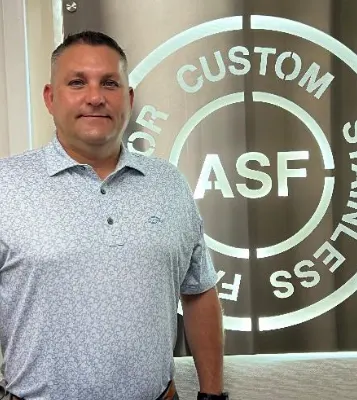You’ll find that quality standards in steel fabrication service aren’t just bureaucratic checkboxes—they’re the foundation of structural integrity and public safety. Implementing rigorous controls and exhaustive material testing ensures that every component meets strict durability requirements. From precise welding validation to systematic inspection protocols, these standards determine whether your fabricated steel will maintain its strength and reliability for decades to come.
Essential Quality Control Standards and Certifications

Several critical quality control standards govern steel fabrication. To guarantee your fabrication processes meet strict regulatory requirements, you’ll need to implement robust quality management systems that align with these standards. This includes maintaining detailed documentation of material testing, welding procedures, and inspection protocols.
Your facility must undergo regular safety auditing procedures to verify compliance and identify potential areas for improvement. These audits examine everything from material traceability to personnel qualifications and equipment calibration. You must demonstrate that your quality control measures consistently meet or exceed industry benchmarks. Maintaining these certifications ensures your steel fabrication processes deliver components that meet all structural and safety requirements.
Steel Grade Selection and Material Testing
Proper steel grade selection sets the foundation for successful fabrication outcomes. You’ll need to align material specifications with project requirements, considering factors like strength, ductility, and corrosion resistance. This critical decision impacts production process optimization and supply chain management throughout the fabrication lifecycle.
To verify compliance with specified grade requirements, your material testing protocol must include thorough chemical analysis, tensile testing, and hardness measurements. You’ll want to employ non-destructive testing (NDT) methods, such as ultrasonic and radiographic inspections, to detect internal defects and destructive testing procedures to gather quantitative mechanical property data. By following ASTM and EN standards, you’ll guarantee your fabricated components consistently meet quality and safety thresholds while maintaining efficient production workflows.
Welding Processes and Quality Verification
When implementing steel fabrication welding processes, you must employ a strategic combination of techniques like SMAW, GMAW, and FCAW to achieve ideal joint integrity. Welding procedure optimization requires thorough attention to joint preparation, including comprehensive cleaning and exact fit-up specifications.
Welding parameter selection must align with certified welder expertise and industry standards like AWS D1.1. You’ll need to validate weld quality through meticulous inspection protocols, starting with visual examination and progressing to more sophisticated NDT methods. Implement liquid penetrant testing to detect surface defects using ultrasonic testing and radiography to identify internal discontinuities. Magnetic particle inspection provides additional verification for ferromagnetic materials. These quality verification steps guarantee your fabricated components meet stringent durability requirements and comply with relevant structural integrity standards.
Inspection Methods and Documentation Requirements

Thorough inspection protocols form the backbone of steel fabrication validation, building upon established welding quality controls. You must implement exhaustive NDT techniques, including ultrasonic and radiographic testing, to detect internal defects while maintaining structural integrity. Surface finish considerations and material traceability requirements must be documented through detailed inspection records and material test reports.
- Visual inspections to identify surface defects, inconsistencies, and deformities
- Dimensional verification to guarantee compliance with design specifications and tolerances
- NDT procedures to examine internal structure without component damage
- Documentation of all inspection results, including test reports and certification records
- Quality control monitoring systems to track and address specification deviations
Your inspection program must maintain rigorous standards throughout the fabrication process, guaranteeing each component meets or exceeds industry requirements while providing complete documentation for regulatory compliance and future reference.
Equipment Calibration and Maintenance Protocols
Maintaining a rigorous equipment calibration and maintenance program is a cornerstone of quality steel fabrication. You’ll need to establish preventive maintenance best practices that align with manufacturer specifications for all your fabrication machinery and measuring tools.
Your calibration schedule optimization should incorporate regular accuracy checks of welding equipment, cutting tools, and measurement devices. Track all maintenance activities through detailed logs documenting repair histories and performance metrics. This data helps you identify potential issues before they impact production quality.
You must guarantee your equipment meets the standards outlined and other relevant regulations. By implementing systematic calibration protocols and adhering to predetermined maintenance intervals, you’ll maintain consistent fabrication accuracy while extending your equipment’s operational lifespan and minimizing costly downtime.
Personnel Qualifications and Training Standards
Equally robust personnel standards must match strong equipment protocols. You must confirm that your fabrication team maintains comprehensive certifications like AWS and ASME welding credentials. Implement skill enhancement initiatives through continuous training programs that cover cutting-edge techniques and industry developments.
Your quality assurance framework should include considerations for workforce diversity while maintaining strict competency requirements.
- Establish documented qualification procedures for all fabrication personnel
- Require and verify relevant welding certifications before critical work assignments
- Conduct regular performance assessments and competency evaluations
- Maintain detailed training records and certification documentation
- Deploy ongoing professional development programs to enhance technical expertise
Your rigorous approach to personnel standards directly impacts fabrication quality. By implementing these measures, you’re guaranteeing your team possesses the expertise necessary for producing high-quality steel components that meet all regulatory requirements and industry specifications.
Non-Destructive Testing Procedures

How can you verify steel fabrication quality without compromising structural integrity? Through non-destructive testing (NDT) procedures, you’ll achieve comprehensive quality validation while maintaining component serviceability. These methods offer cost-effective implementation and real-time data analysis capabilities.
Ultrasonic inspection, magnetic particle testing, and eddy current testing are particularly effective for detecting internal defects without damaging the steel structure. Radiographic testing using X-rays or gamma rays reveals hidden flaws, voids, and inclusions within the material. For surface-level examination, liquid penetrant inspection identifies welds’ breaks, cracks, and porosity. Visual inspection is a vital complementary method, allowing you to detect surface abnormalities like distortion and corrosion. Together, these NDT procedures guarantee thorough quality verification throughout the fabrication process.
Quality Assurance Monitoring and Reporting Systems
Exceeding NDT procedures, effective quality assurance demands systematic monitoring and reporting mechanisms. Modern quality assurance systems integrate automation technologies with real-time data collection to guarantee consistent production quality. By implementing thorough quality data integration, you can track, analyze, and optimize fabrication processes while maintaining compliance with industry standards.
Automated quality monitoring systems capture real-time performance metrics. Digital documentation platforms confirm complete traceability. Integrated reporting tools generate instant compliance verification. Quality data analytics enable predictive maintenance scheduling. Cloud-based systems facilitate immediate stakeholder access to quality reports.
Your quality assurance monitoring system should incorporate these elements to maintain rigorous control over steel fabrication processes. When properly implemented, these systems considerably reduce non-conformances while providing transparent documentation of quality standards adherence.
Commitment to Excellence in Steel Fabrication
Ensuring durability in steel fabrication requires more than technical precision—it demands a steadfast commitment to quality at every stage. Each step, from material selection to welding verification and non-destructive testing, is vital in guaranteeing structural integrity and long-term performance.
At All Southern Fabricators, we uphold industry standards, integrating rigorous quality control measures, advanced inspection techniques, and certified personnel training to deliver steel components that meet and exceed regulatory requirements. Our dedication to precision ensures that every fabricated piece is built for strength, reliability, and longevity.
Contact All Southern Fabricators today for expertly crafted steel components backed by industry-leading quality assurance.

